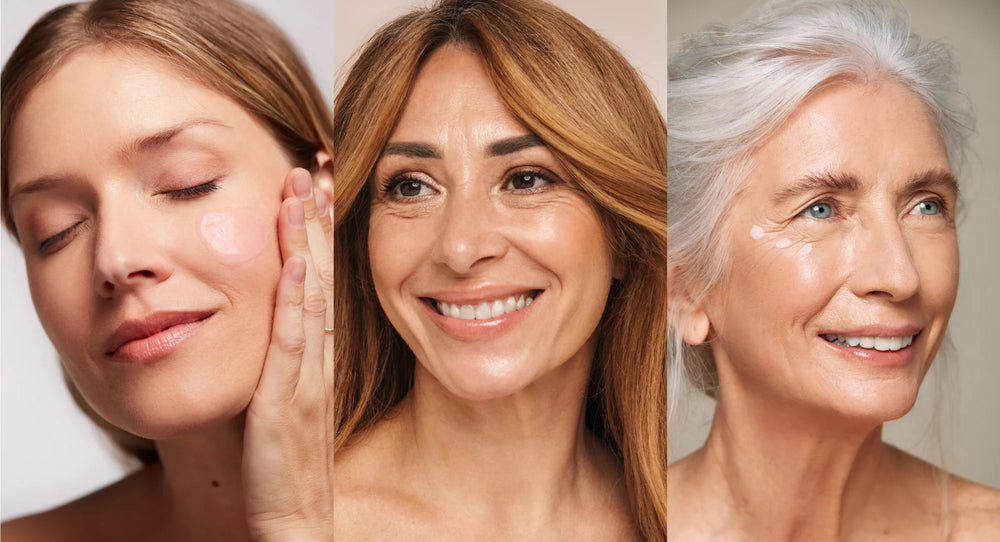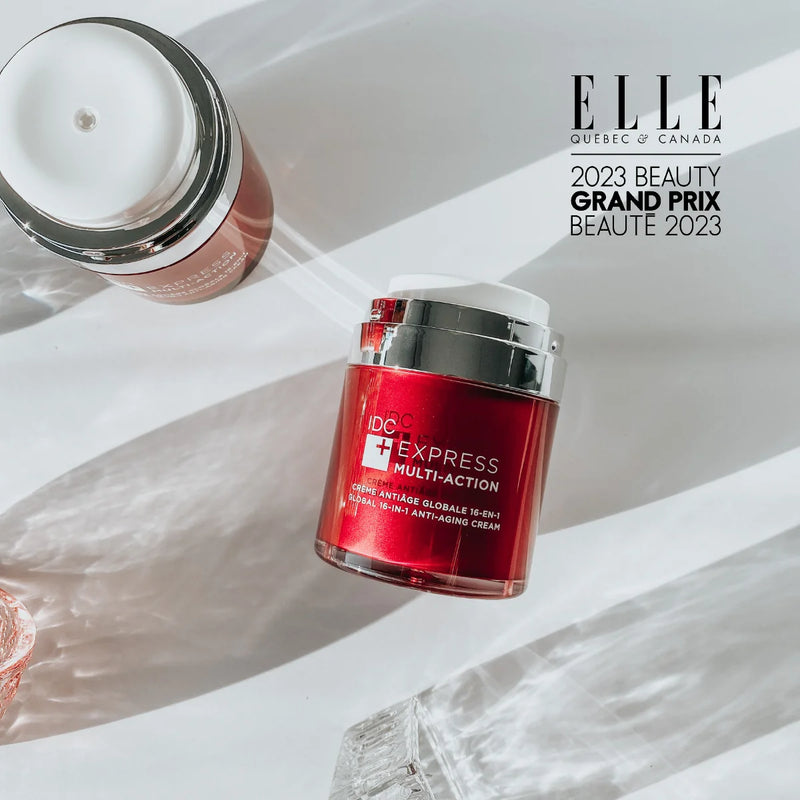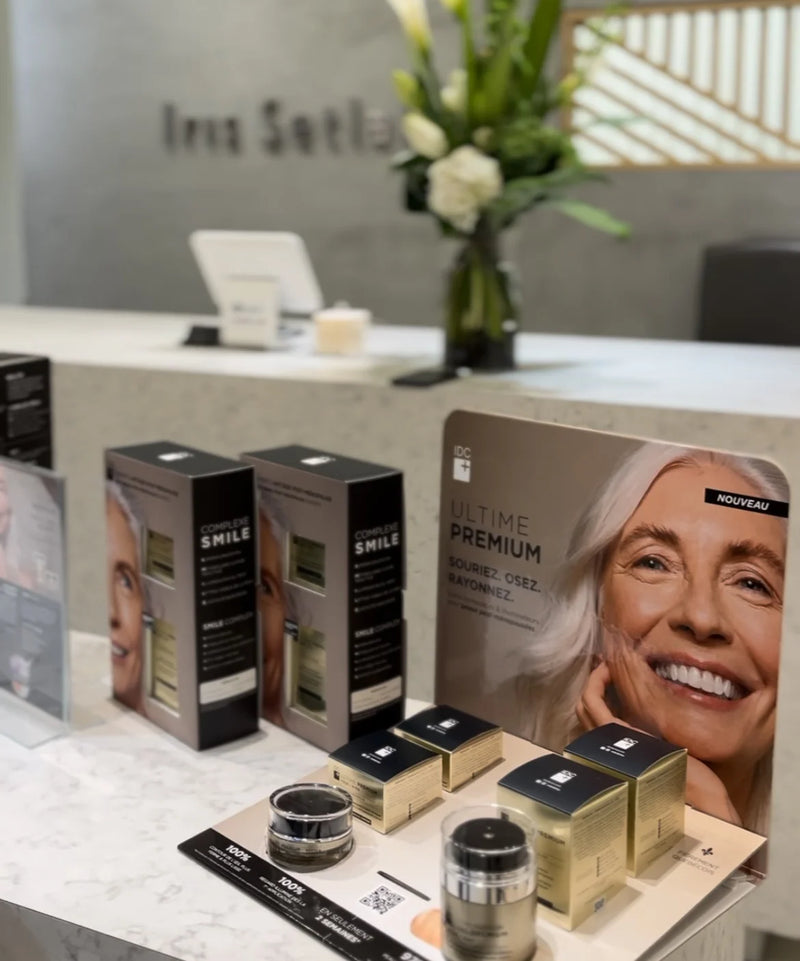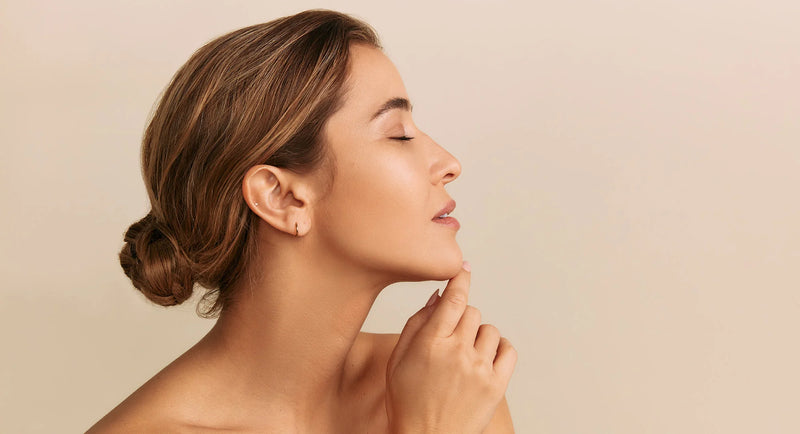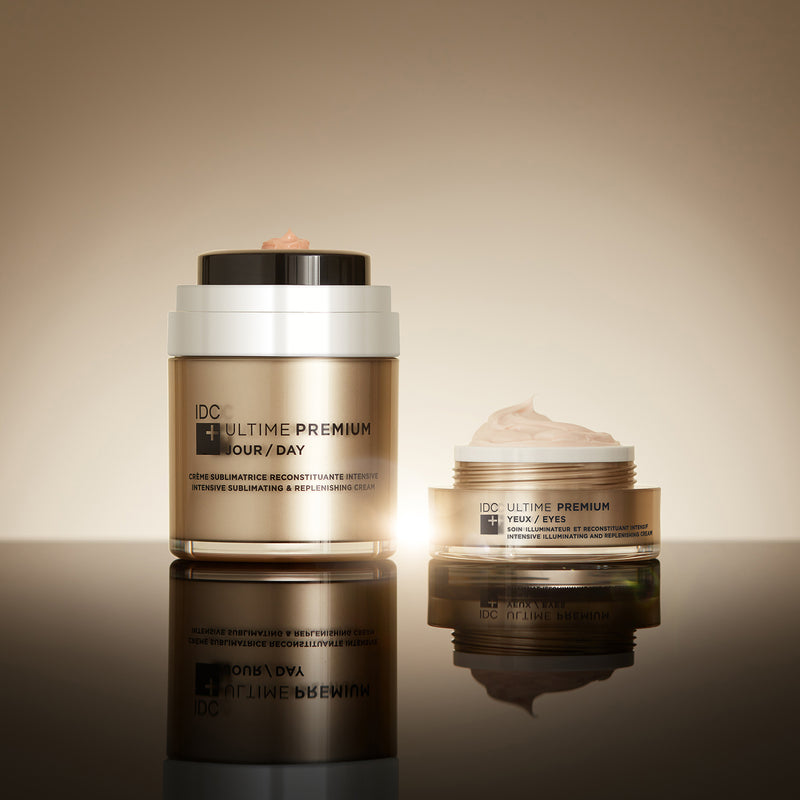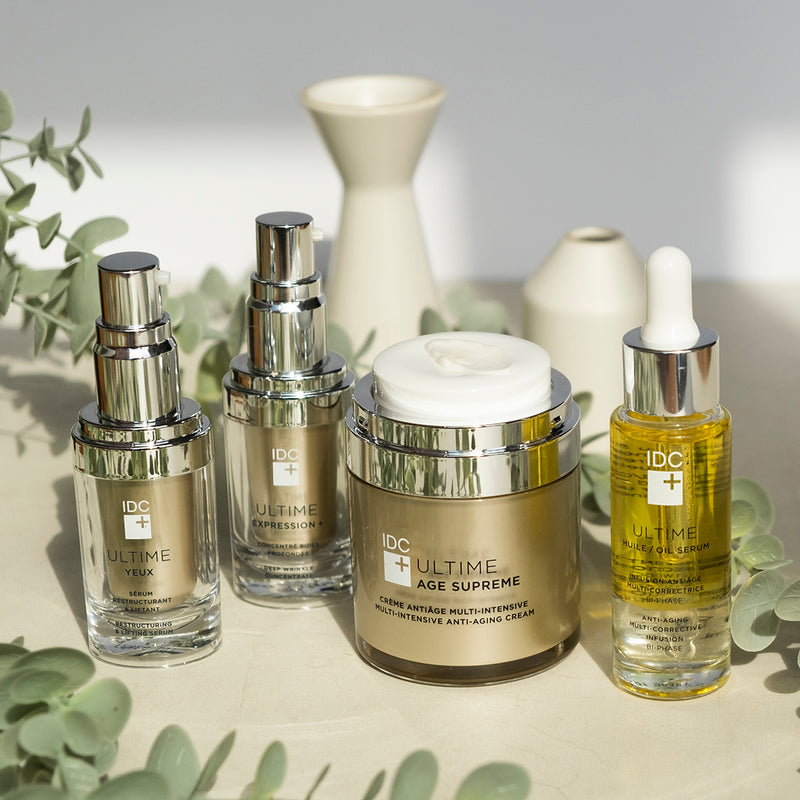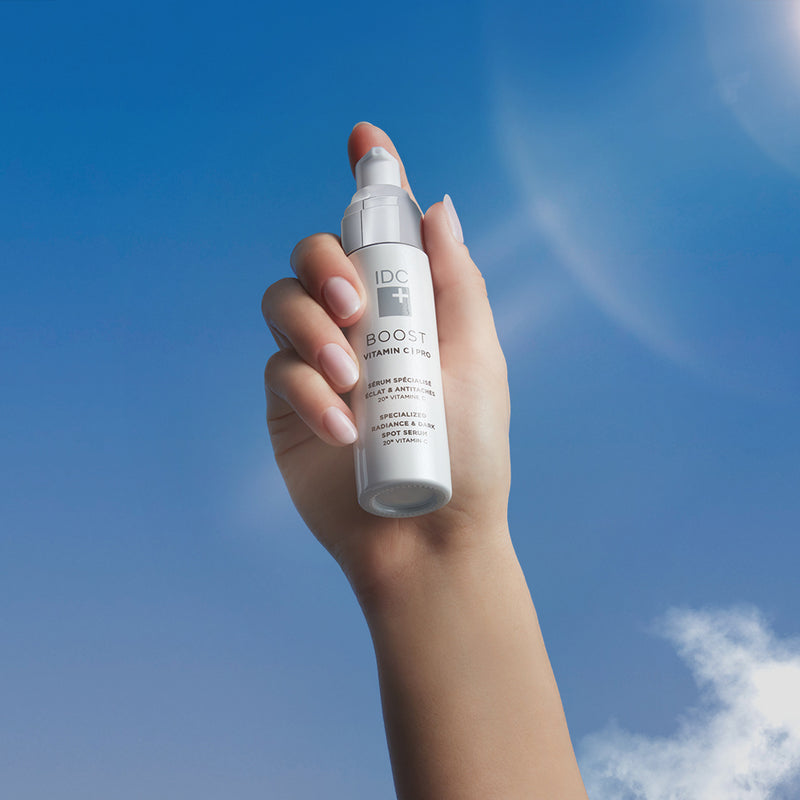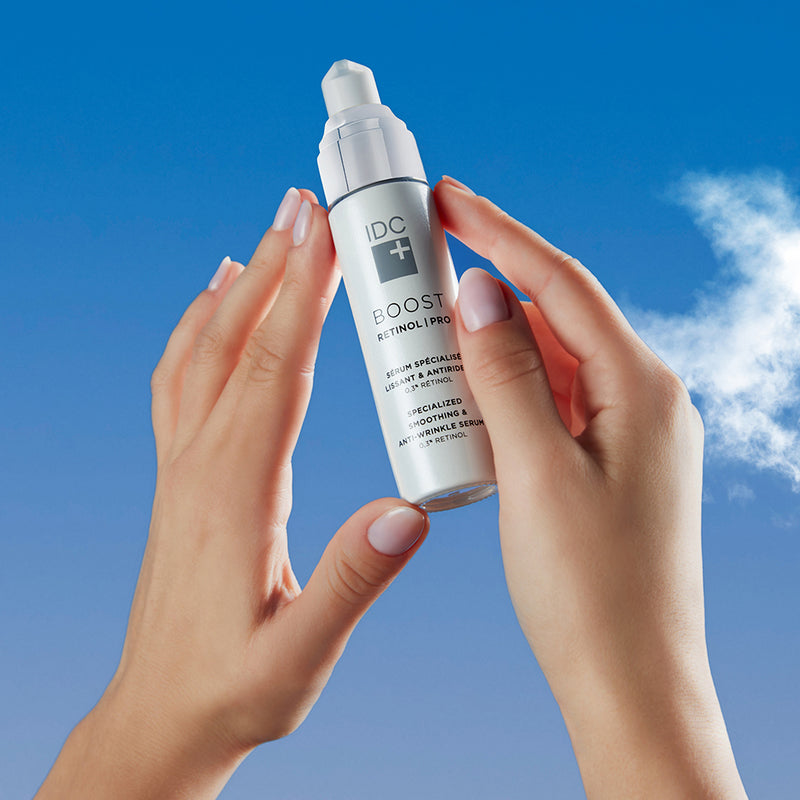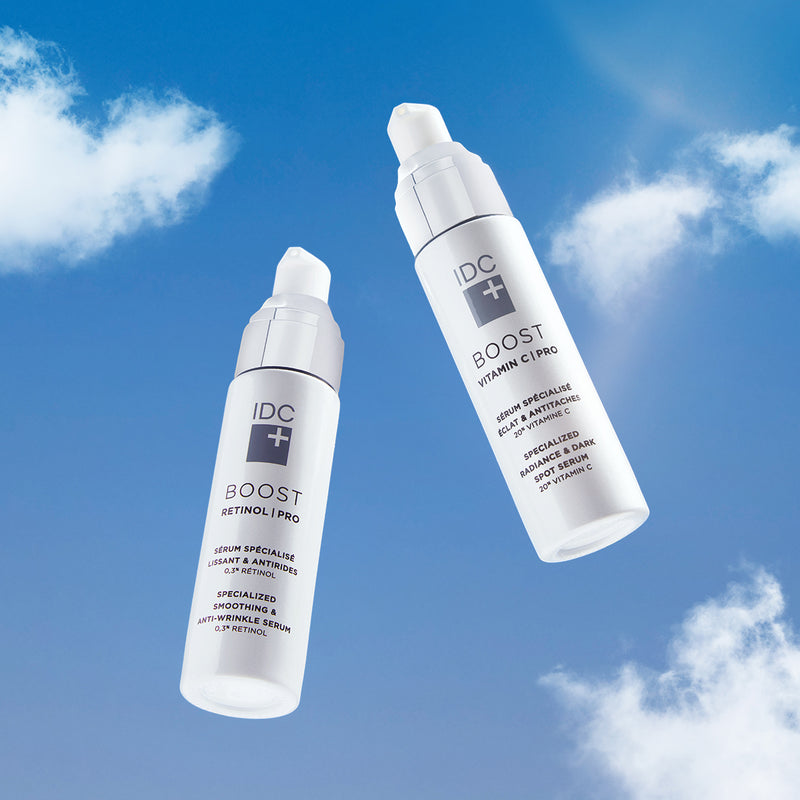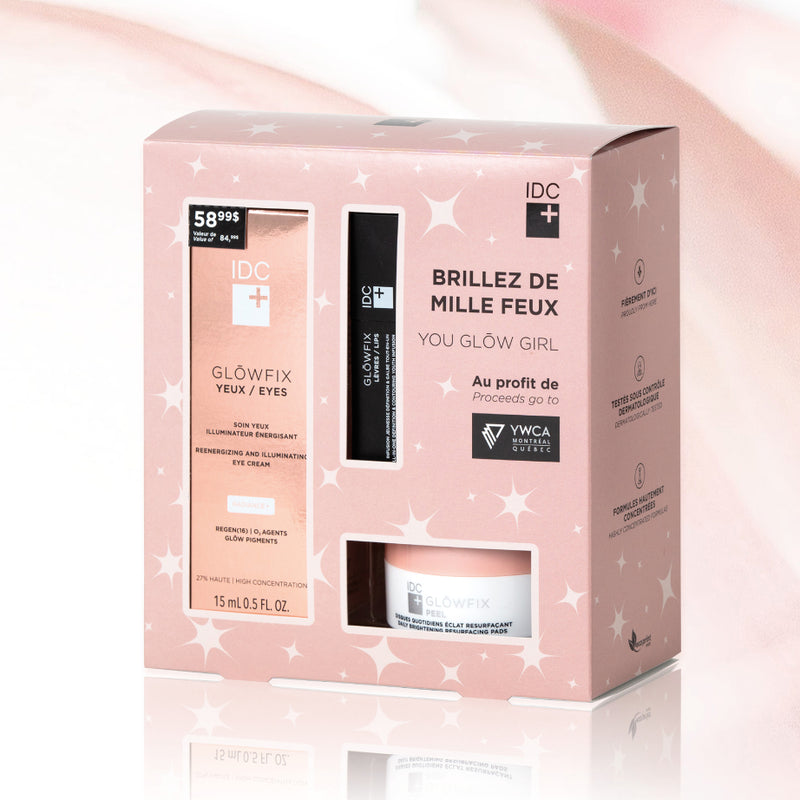Here's a quick and easy questionnaire to help me identify which stage of menopause I'm in and which skincare range to use.
Even if it's not the "sexiest" subject, menopause and its various stages seem to be a subject that's being put forward more and more, at last. I say "finally" because it needs to be talked about. Canadian women will spend on average up to half their lives in the menopause phase, and this "menopausal life" brings with it its share of changes. Much is said and said about the first phase of a woman's life, but she is left to discover and believe the various myths and popular beliefs of previous generations about the second phase of her life.
The menopause is in fact a period of hormonal transition that can last several years and is accompanied by numerous bodily changes, including to the skin. Little is said about what the phases of menopause can do to the skin. Putting the spotlight on "cutaneous menopause" will enable women to better understand the changes and needs of their skin.
The menopause is generally divided into three stages: perimenopause, menopause and post-menopause. All these stages have one thing in common: hormonal imbalances. It's at this point that we're faced with a new reality: hormonal aging of the skin.
Perimenopause is the period immediately preceding menopause, and can begin several years before its arrival. During this period, hormone levels fluctuate and can cause symptoms such as hot flushes, mood swings and sleep disturbances. As far as the skin is concerned, perimenopause can lead to a reduction in skin elasticity and firmness, as well as increased dehydration and dryness. We may also notice that our skin type changes. For example, combination skin becomes dry, while normal skin becomes oily.
Once menopause is reached, which is designated by the complete cessation of the menstrual cycle, estrogen levels drop considerably, activating skin aging. Skin becomes thinner and more fragile, and the appearance of wrinkles increases. In addition, collagen production declines considerably, which can lead to a loss of firmness and sagging of the skin. Facial contours are less well defined, and the skin seems to give in to gravity.
Once menopause has passed, we enter the post-menopausal phase. Menopausal symptoms may lessen at this stage, but hormonal changes continue to affect the skin. The drastic drop in estrogen levels leads to a reduction in sebum production, making the skin very dry, dehydrated, uncomfortable and more prone to irritation. The skin's metabolism slows down considerably, the complexion becomes dull and grey, and the reduced production of collagen and elastin leads to a loss of volume and elasticity and an increase in deeper wrinkles. All these signs can make a post-menopausal woman's face look severe and tired, without actually being so.
Each phase of menopause comes with different needs for the skin. Recognizing which phase you're in is essential to selecting the right skin care and cosmetics routine for your skin.
IDC DERMO's ULTIME and ULTIME PREMIUM ranges are ideal for perimenopausal, menopausal and post-menopausal skin.
It's important to note that every woman experiences menopause in a unique way, and the effects on the skin can vary from one person to another. Some may experience more pronounced changes, while others may not notice any significant difference.
Here are six quick and easy questions to help you identify which phase you seem to be in, and which range of 100% Québec IDC DERMO skincare products your skin may need.
1. Do you notice that your facial contours (the oval of your face) have become more blurred recently, less well defined than before?
A- Yes.
B- Yes, I'm starting to notice that.
C- No, not yet.
2-Do you feel that your face has taken on a more severe, tired and resentful look recently?
A- Yes.
B- Sometimes, depending on how well I sleep.
C- No.
3-How would you describe the dryness of your skin?
A- My skin feels very dry, dehydrated and even uncomfortable, with possible tightness during the day and/or when I wake up.
B- My skin feels drier and dehydrated. I feel occasional tightness during the day or when I wake up.
C- My skin type is stable and has not changed for several years.
4- Do you notice that your deep expression lines have become more pronounced and deeper recently?
A- Yes.
B- Sometimes, depending on the day, the light and my expressions.
C- I can notice them, but the situation is relatively stable.
5- Your menstrual cycle is :
A- Over a year ago, or even several years ago.
B- Irregular or over less than a year ago.
C- Relatively regular.
Which statement best describes your situation?
A- I've had hot flashes and night sweats, but they're finally over.
B- I sometimes have hot flashes and night sweats.
C- I don't have any hot flashes or night sweats yet.
Routine A
If your answers are mainly "A", you seem to be post-menopausal and your skin would benefit from the ULTIME and ULTIME PREMIUM ranges.
Here's a suggestion for a complete IDC DERMO routine. Routine to follow and/or products to integrate into your existing routine according to your needs:
Step 1 morning and evening: PURE Lait - Lait nettoyant démaquillant micellaire 5-en-1.
Step 2 in the evening: GLŌWFIX PEEL – Disques quotidiens éclat resurfaçant.
Step 3 morning and evening: ULTIME HUILE SÉRUM – Infusion antiâge multi-correctrice.
Step 4 morning and evening: ULTIME PREMIUM YEUX – Soin illuminateur et reconstituant intensif
Step 5 morning: ULTIME PREMIUM JOUR – Crème sublimatrice reconstituante intensive
6th step evening : ULTIME NUIT – Crème antiâge absolue
BONUS CARE: 2 times a week, replace your ULTIME NUIT with ULTIME MASQUE - Masque de nuit antiâge suprême
Routine B
If your answers are mainly "B", you seem to be in perimenopause or menopause and your skin needs the ULTIME range.
Here's a suggestion for a complete IDC DERMO routine. Routine to follow and/or products to integrate into your existing routine according to your needs:
1st step morning and evening: PURE GEL – Nettoyant démaquillant purifiant 5-en-1
2nd step 1-2 times a week; in the evening : PURE MASQUE – Exfoliant peau neuve triple action
Step 3 in the evening: ULTIME HUILE SÉRUM – Infusion antiâge multi-correctrice
4th step morning and evening: ULTIME YEUX – Soin restructurant et liftant
Step 5 morning and evening: ULTIME AGE SUPREME – Crème antiâge multi-intensive
BONUS TREATMENT: Once or twice a week, we suggest replacing your ULTIME NUIT with the >ULTIME MASQUE - Masque de nuit antiâge suprême
Routine C
If your answers are mainly "C", your perimenopause doesn't seem to have started yet. However, to prepare your skin for the changes to come, we strongly suggest that you install a high-performance skincare routine.
At IDC DERMO, you can choose from the following ranges:
EXPRESS – All-in-one care
GLŌWFIX – Anti-aging, rejuvenation & radiance care (Glōw pigments).
IDÉAL – Complete anti-aging & pro-youth care.
Here's a suggestion for a complete routine in EXPRESS IDC DERMO mode. Don't hesitate to consult the dermo-cosmetic experts in the pharmacy and contact IDC DERMO via e-mail or telephone (info@idcdermo.com or 1 877 543-8671) for any questions or other care and routine suggestions.
Step 1 morning and evening: PURE GEL – Nettoyant démaquillant purifiant 5-en-1
2nd step in the evening: GLŌWFIX PEEL – Disques quotidiens éclat resurfaçant.
3rd step morning and evening: EXPRESS MULTI-ACTION – Crème antiâge globale 16-en-1.
Whichever range is recommended and used, it's important to note that morning skincare should always end with the application of a sun cream of SPF 30 and above, and that if the skin is exposed to UV, this protection should be renewed every two hours throughout the day. At IDC DERMO, the SOLIS+ range, which combines a moisturizing anti-aging cream SPF 30 and a mattifying anti-aging powder SPF 50, is the range to integrate at the end of your skincare routine every morning.
Remember that your choice of products is much more important than you think. The care you apply to your skin, morning and night, is the way to nourish from the outside this organ that has so much to do and manage in these times of great change. Good skin nutrition is essential if you want to give your skin all the tools it needs to maintain and regain its balance and health, despite all the hormonal changes it undergoes.






